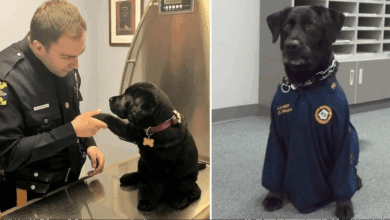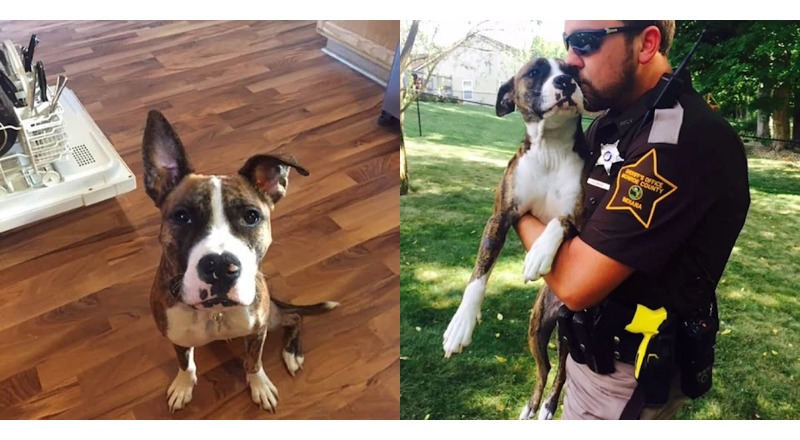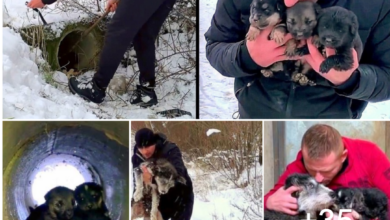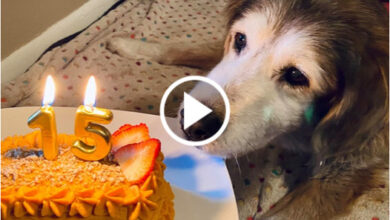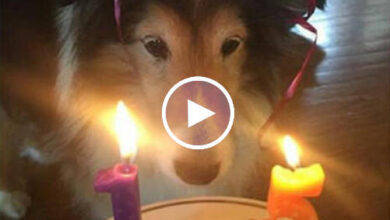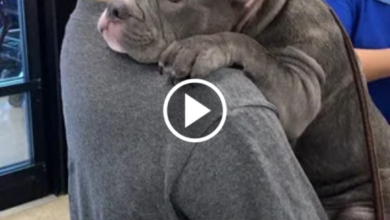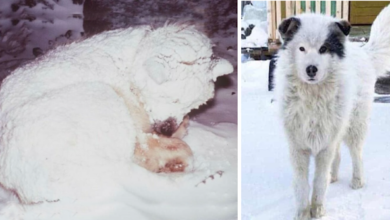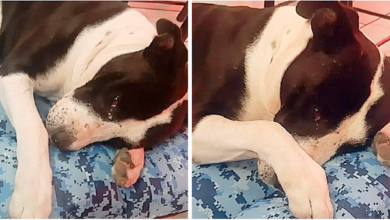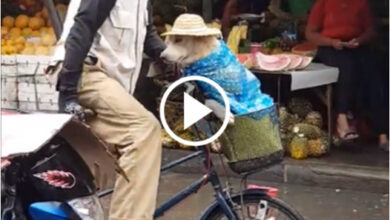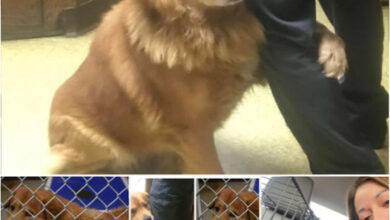How To Read Dog Body Language

Have you ever heard the saying, ‘Actions speak louder than words?’ Well, the same applies to our furry friends. Dogs communicate through body language and vocalizations, and it’s up to us as pet owners to decipher what they’re trying to tell us. Understanding how to read dog body language is essential for building a strong bond with your canine companion and ensuring their overall well-being.
As a dog owner, you need to be able to recognize when your pup is feeling happy, anxious, scared, or aggressive based on their body cues. Reading your dog’s body language can help prevent dangerous situations from arising and improve communication between you two.
In this article, we’ll guide you through some of the most common ways dogs express themselves through their bodies and give you tips on how to interpret them accurately.
Observing Your Dog’s Overall Posture
Take a look at your furry friend’s overall body language – it’ll give you a good idea of how they’re feeling! Understanding your dog’s posture can help you recognize their emotional state.
One key aspect to observe is their ear position. Dogs typically raise their ears when they’re alert and interested, while flattened ears may indicate fear or anxiety.
Another important factor in reading your dog body language is noticing muscle tension. A tense body may signal discomfort or aggression, while a relaxed body indicates that your pup is comfortable and happy. Look for signs like raised hackles or a stiff tail, which could indicate that your dog feels threatened.
Now that you’ve observed your dog’s overall posture, it’s time to move on to interpreting facial expressions. Paying attention to both the body and face will give you an even better idea of what your furry friend is trying to communicate with you!
Interpreting Facial Expressions
It’s almost as if our furry companions have a secret language of their own, conveyed through subtle facial expressions that can reveal everything from excitement to fear. Identifying these cues is essential in understanding what your dog is trying to communicate with you.
One common misconception about dog facial expressions is the belief that baring their teeth always indicates aggression. However, this isn’t necessarily the case. Dogs often bare their teeth when they’re happy and relaxed, such as during playtime or when greeting someone they love.
Another facial expression that can be misinterpreted is the act of yawning. While we often associate this gesture with tiredness or boredom, dogs may yawn when they’re feeling stressed or anxious. This could be due to a variety of reasons ranging from loud noises to unfamiliar people or animals nearby. Pay attention to other cues your dog might be giving off in conjunction with yawning, such as avoiding eye contact or licking their lips excessively.
Analyzing tail movements is another crucial aspect of reading your dog’s body language accurately. By observing both facial expressions and tail positions, you’ll have a better understanding of how your furry friend is feeling at any given time.
So pay close attention next time you interact with your canine companion – you never know what kind of message they might be trying to convey!
Analyzing Tail Movements
By paying close attention to how your furry friend wags their tail, you can gain a deeper understanding of their emotions and strengthen the bond between you and your beloved pet. Understanding dog’s tail language is crucial in communicating with them effectively.
A wagging tail doesn’t always indicate happiness or friendliness; it can actually signify various emotions depending on the way it moves and the context of the situation. To help you identify the difference between a friendly and aggressive tail movement, here are some tips:
- The height of the tail: A high-held tail that’s stiff or twitchy indicates alertness or aggression. On the other hand, a relaxed tail held at mid-height shows confidence or contentment.
- The speed of the wag: A fast and wide wag usually means excitement or happiness while a slow and narrow one could indicate suspicion or caution.
- The direction of the wag: If your dog’s tail wags more to one side than another, it could signal a specific emotion. For example, if it’s tilted towards their right side, it might mean they’re happy to see someone familiar while tilted left may indicate anxiety.
By mastering these subtle cues in your dog’s body language, you’ll be able to better understand what they’re feeling and respond accordingly. Paying attention to body movements such as ear position, posture, and vocalizations can also give you further insight into their emotional state without relying solely on verbal communication.
Understanding your dog’s behavior will not only make them feel more comfortable around you, but also help prevent any potential misunderstandings that may arise from misinterpreting their signals.
Paying Attention to Body Movements
Paying close attention to how your furry friend moves can reveal a lot about their emotions and help you strengthen your bond with them. Identifying subtle cues in their body language is crucial for understanding what your dog is trying to communicate to you.
For example, if your dog is standing tall with their ears perked up and tail wagging vigorously, they’re likely feeling happy and excited. However, it’s essential to remember that context plays a significant role in interpreting your dog’s body movements accurately.
A wagging tail doesn’t always mean happiness; it could also indicate stress or anxiety. If your dog’s tail is tucked between their legs while they’re cowering, it’s a clear sign that they’re afraid or uncomfortable.
By paying attention to the nuances of your dog body language, you can become more attuned to their needs and wants. This heightened level of understanding will allow you to better communicate with them, deepen your bond, and ultimately ensure that both you and your furry companion are happy and healthy together.
Now let’s move on to the next section about listening to vocalizations!
Listening to Vocalizations
When it comes to understanding your dog’s vocalizations, you need to pay attention to the different types of barks they make. Whether it’s a playful bark or an aggressive one, they all have different meanings.
Additionally, growling and whining can also convey important information about what your dog is feeling. By responding appropriately to your dog’s vocalizations, you can strengthen your bond and ensure their needs are being met.
Identifying Different Types of Barks
Different types of barks can reveal a lot about what your dog is feeling and trying to communicate. Understanding vocal tone and recognizing environmental triggers can help you identify the different types of barks your dog uses.
One type of bark is the alert bark, which is a quick burst of sound used to warn about something unusual or suspicious in their environment.
Another type of bark is the demand bark, which is longer and more insistent than an alert bark, and usually indicates that your dog wants something from you.
A third type of bark is the playful bark, which has a higher pitch and shorter intervals between each sound. This kind of bark often accompanies playtime with other dogs or humans.
To understand growling and whining better, pay attention to your dog’s body language as well as vocalizations.
Understanding Growling and Whining
Now that you know how to identify different types of barks, it’s time to move on to another aspect of dog body language: growling and whining. These vocalizations can also provide important clues about your dog’s emotional state.
Growling is often a sign of fear and aggression in dogs. This means that your dog feels threatened or afraid and is trying to communicate this with you. It’s important to recognize this type of growling so that you can take steps to address the underlying cause and prevent any potential harm.
On the other hand, whining can be a sign of separation anxiety in dogs. If your dog exhibits this behavior when you leave them alone for extended periods, it may be an indication that they are feeling anxious or stressed without you around.
Understanding these vocalizations can help you better understand what your furry friend is trying to communicate with you. By recognizing the signs and responding appropriately, you can build a stronger bond with your pet and ensure their well-being.
In the next section, we’ll discuss how to respond effectively to your dog’s vocalizations without resorting to punishment or negative reinforcement techniques.
Responding to Your Dog’s Vocalizations
Properly responding to your pup’s vocalizations can strengthen your bond and prevent negative reinforcement. Interpreting the meaning behind your dog’s barks, whines, and growls is crucial in understanding their needs and emotions.
For example, a high-pitched bark may indicate excitement or playfulness, while a low growl could mean aggression or fear. Differentiating between these sounds will allow you to respond appropriately to your dog’s behavior.
When responding to your dog’s vocalizations, it’s important to remain calm and assertive. Yelling or scolding them may only exacerbate the situation and cause further stress for both you and your pet. Instead, use positive reinforcement techniques such as rewarding good behavior with treats or praise.
Additionally, providing proper exercise and mental stimulation can help prevent excessive vocalization in dogs.
Understanding your dog body language goes beyond just interpreting their vocalizations; considering breed-specific body language can also be helpful in communicating with your pet effectively. Different breeds have distinct physical cues that convey specific emotions or behaviors unique to their breed.
By observing these cues, you can develop a stronger relationship with your furry friend while ensuring their needs are met.
Considering Breed-Specific Dog Body Language
How much you can learn about your furry friend’s emotions by understanding their breed-specific body language. Each breed has its own unique traits and tendencies.
Here are four examples of common breed-specific behaviors that you should keep in mind when interacting with your dog:
- Terriers: These dogs were originally bred for hunting small prey, so they tend to have a high prey drive and may become fixated on chasing squirrels or other animals. They also have a tendency to dig, bark excessively, and show aggression toward other dogs.
- Herding breeds: These dogs were bred to control livestock, so they often display behaviors like circling or nipping at people’s heels. They may also become anxious if they don’t have a job to do or if they feel like their territory is being threatened.
- Retrievers: These dogs were bred for retrieving game during hunting trips, so they tend to be very friendly and eager to please. They may wag their tails vigorously when greeting people or carrying objects in their mouths as a form of play.
- Hounds: These dogs were bred for tracking scents over long distances, so they tend to be very independent and strong-willed. They may follow their noses wherever it takes them and show little interest in following commands unless there is a reward involved.
Understanding these breed-specific behaviors can help you adapt your communication style accordingly and prevent misunderstandings between you and your dog. By learning more about what makes your furry friend tick, you’ll be able to build stronger bonds with them based on mutual trust and respect.
In the next section, we’ll explore how practicing positive reinforcement can further strengthen this bond without resorting to punishment-based methods.
Practicing Positive Reinforcement
Using positive reinforcement is an effective and humane way to strengthen the bond between you and your furry companion. Training your dog using treats can be a fantastic tool to teach them new behaviors while also reinforcing good behavior.
When it comes to body language training, giving treats for desirable actions will help encourage your pup’s correct interpretation of a given situation. Positive reinforcement-based training involves rewarding positive behavior instead of punishing negative behavior.
When dealing with dogs, it’s essential that we address their behavior in a manner that encourages learning rather than causing fear or anxiety. Giving your dog treats when they display desirable body language helps them understand what you expect from them in certain situations.
Incorporating body language training into daily life with your canine friend can be fun and rewarding for both of you! Remembering to use positive reinforcement when practicing these skills will ensure that your pup remains happy, confident, and well-behaved.
With time, practice, and patience, you’ll develop a strong understanding of how to read dog body language effectively while building an even stronger bond with your four-legged companion!
Conclusion
Congratulations! You now have a better understanding of how to read your dog body language. By observing their overall posture and interpreting facial expressions, analyzing tail movements, paying attention to body movements, listening to vocalizations, and considering breed-specific body language, you can decode what your furry friend is trying to communicate.
Remember that practicing positive reinforcement is key in building a strong bond with your dog. When you respond positively to their behaviors and signals, it reinforces the trust they have in you as their caregiver.
Keep an eye out for subtle changes in dog body language and use this knowledge to strengthen your relationship with your pup. With patience and practice, you’ll be able to understand your dog on a deeper level and create a loving and harmonious household.
Read more:





